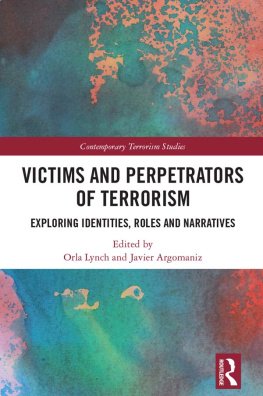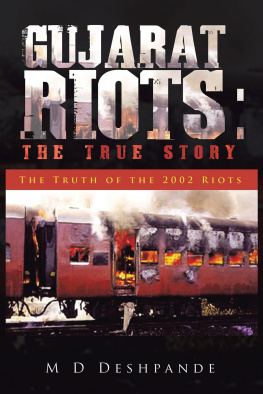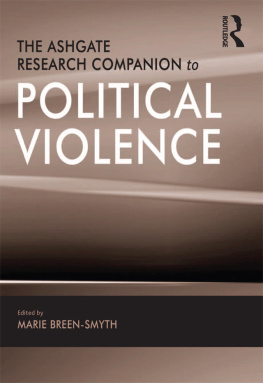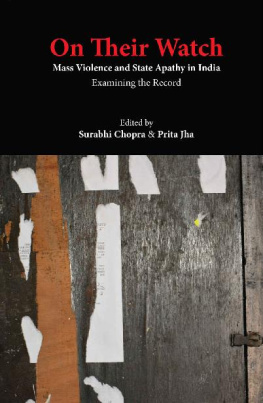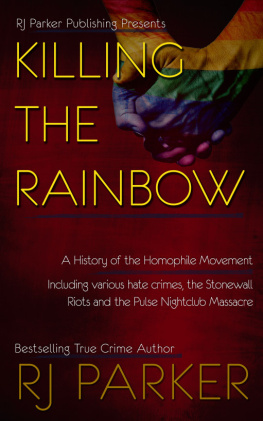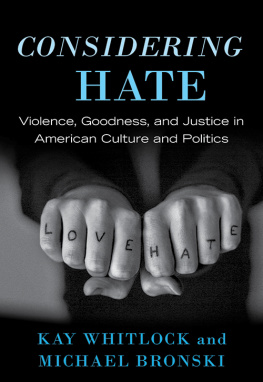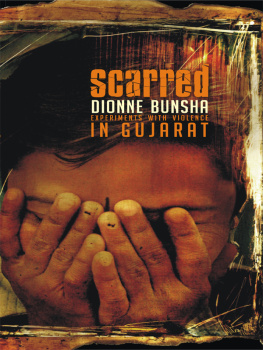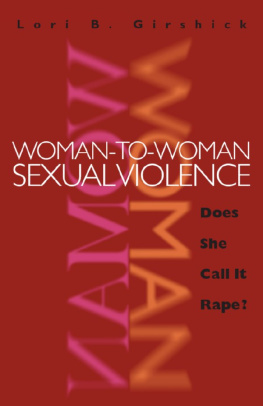


First published by Context, an imprint of Westland Publications Private Limited in 2018
61, 2nd Floor, Silverline Building, Alapakkam Main Road, Maduravoyal, Chennai 600095
Westland, the Westland logo, Context and the Context logo are the trademarks of Westland Publications Private Limited, or its affiliates.
Copyright Revati Laul, 2018
ISBN: 9789387894204
All rights reserved
The views and opinions expressed in this work are the authors own and the facts are as reported by her, and the publisher is in no way liable for the same.
No part of this book may be reproduced, or stored in a retrieval system, or transmitted in any form or by any means, electronic, mechanical, photocopying, recording, or otherwise, without express written permission of the publisher.
To my mother,
my everything
CONTENTS
Ujaaley mein khada insaan dekh nahin sakta; jo andherey mein khada hai, usko dikh jaata hai sab.
(Brightness is blinding. Its when youre standing in the dark that you really begin to see.)
Farida Bano Abdul Qadir Khalifa, witness and survivor of the Naroda Patiya massacre in Ahmedabad, Gujarat, 2002, on being questioned in court about her ability to identify members of the mob in the night.
Of all the signs telling Abdul Majid his world was about to crumble, the khichdi is the one that truly hit home. It was the middle of the afternoon on 28 February 2002 when the mob closed in on Naroda Patiya. Majid was hiding on a terrace when Jai Bhawani spotted him from below and went up to talk to him.
Majidbhai, he said, you guys have been hungry since the morning. Come down and bring me those large cooking vessels from your kitchen. Ill make some kadhi khichdi.
Majid stood up suddenly. Kadhi khichdi? Kadhi khichdi! But thats food for a funeral, he said, feeling a sudden surge of panic.
Yes, Jai Bhawani replied. You are all going to die.
Majid ran down the stairs. He had locked his wife and kids and mother-in-law in a temple right behind the house, where he assumed that Jai Bhawani would keep them safe. The friendly neighbour he thought he could trust.
Majid scrambled to let them out. They ran together. Separately. Then in broad daylight, everything went dark. Majid lay in a heap near Teesra Kuan, the Third Well, struck in the back of his head by what felt like a sword. As he was fading in and out of consciousness, he heard his daughter calling out to him from the nearby park. Abba, abbaaaaa By the time he came to, her body was cold. He had lost six children, his pregnant wife and mother-in-law. Looking back, Majid counted the signs he had missed the day before.
There had been signs. At the street corner, away from the screeching buses on the main road, Majid had overheard traders and autorickshaw drivers discuss the possibility of violence erupting in this part of Ahmedabad. Revenge, he heard, was spreading its tentacles across the state of Gujarat after fifty-nine Hindu volunteers from the Vishwa Hindu Parishad, or VHP, the World Hindu Council, were burnt alive on a train. The bogey they were in had caught fire in a Muslim-majority town called Godhra. Some said that was so far away130 kilometres, a two-and-a-half-hour bus ride from the industrial wasteland of Naroda Patiya. Even though this was also a Muslim neighbourhood, Majid thought it was too insignificant to matter. But then he thought about the fact that Hindus had been killed. What if they decided it was time to teach Muslims everywhere a lesson? If Majid was unsure of how to read the signs, the afternoon news spelt it out in bold. A headline in the Gujarat paper Sandesh , being sold at the railway stall, screamed Khoon ka badla khoon. Blood for blood.
Later that night, as Majid was downing the noisy metallic shutter to his grocery store, he had seen Jai Bhawani go past, lugging a heavy thirty-five-litre barrel with him.
Is that alcohol youre carting home? he had asked.
Jai Bhawani had said, No, Bhai. Actually, its petrol.
That certainly should have been an early warning sign. Why was he carrying so much fuel? Instead, it was the khichdi the next day that finally sank in. Bhawani and his friends killed Majids family, tossed their bodies into Teesra Kuan, poured petrol and set them alight. They came prepared with snacks and drinks, he remembered. Over fifteen years of telling, his narrative was now set in rigor mortis. There is a blankness to his description of how his mother-in-laws polyester sari had melted in the fire so that the two daughters who had clung to herAfreen Bano and Shaheen Banowere found stuck to the grandmother in their charred state.

On that day, the mob had also encircled Kauser Bi near Teesra Kuan. She was pregnant and due any day, so she could not run. Her husband, Firozbhai, was stuck on the other side of the road, unable to cross because everything was blocked off by fire and an out-of-control mob. He only heard later, when he went to claim his wifes body, of how Suresh Langdo, Babu Bajrangi, Jai Bhawani and Guddu Chhara had surrounded her, murdered her, ripped out the foetus within her with a sword and killed it. He was sure of it, because of the state her body was found in, and also because her fourteen-year-old nephew Javed saw it while hiding under a pile of bodies, pretending to be dead. He described it in court eight years later.
Ever since, Firozbhai has been talking to Kauser Bi in his dreams. We were both exactly alike. One kind of people, he said, looking back. He has been scattering flowers on her grave every year since then. Red roses. She had worn a lovely red salwar kameez on their wedding day.

Among the survivors of the twenty-eighth was someone who took thirteen years to see herself as a victim. She did not lose her family that day. She was, in fact, married to a man from the mob. A man who had helped kill Abdul Majids family and Kauser Bi. His name was Suresh Jadeja, better known in these parts as Suresh Langdo, the man with the bad leg.
The day before the violence, Sureshs wife had a fever. They were at the local doctors when they heard about the burning of coach S6 of the Sabarmati Express. The coach was carrying Hindus, mostly from the VHP, headed to Uttar Pradesh on a religious campaign, when someone pulled the chain and the train stopped abruptly in the Muslim-majority town of Godhra. A fight had erupted at the railway station and then the train bogey was burned down.
The doctors wife and daughter were on that train. They spoke of how lucky the two of them were to have not been in the compartment that had caught fire. Of the indelible scars they bore from the sights they had seen. Of the burned bodies and the stench. And the panic they felt as they ran for their lives.
As they left the clinic, Sureshs anger was rising. He turned to his wife and remarked, If it is those Muslims that have done this, I will not let them be.
Why cant you just see this as people being burned? asked Sureshs wife, now scared for her life. Her name was Farzana Bano and she was Muslim.
They got home and Suresh started a heated conversation with his uncle and neighbour, Jayantibhai. You dont get mixed up in all of this. Just stick with your family, Im telling you, Jayantibhai said in a vain attempt to temper the conversation.
Next page


